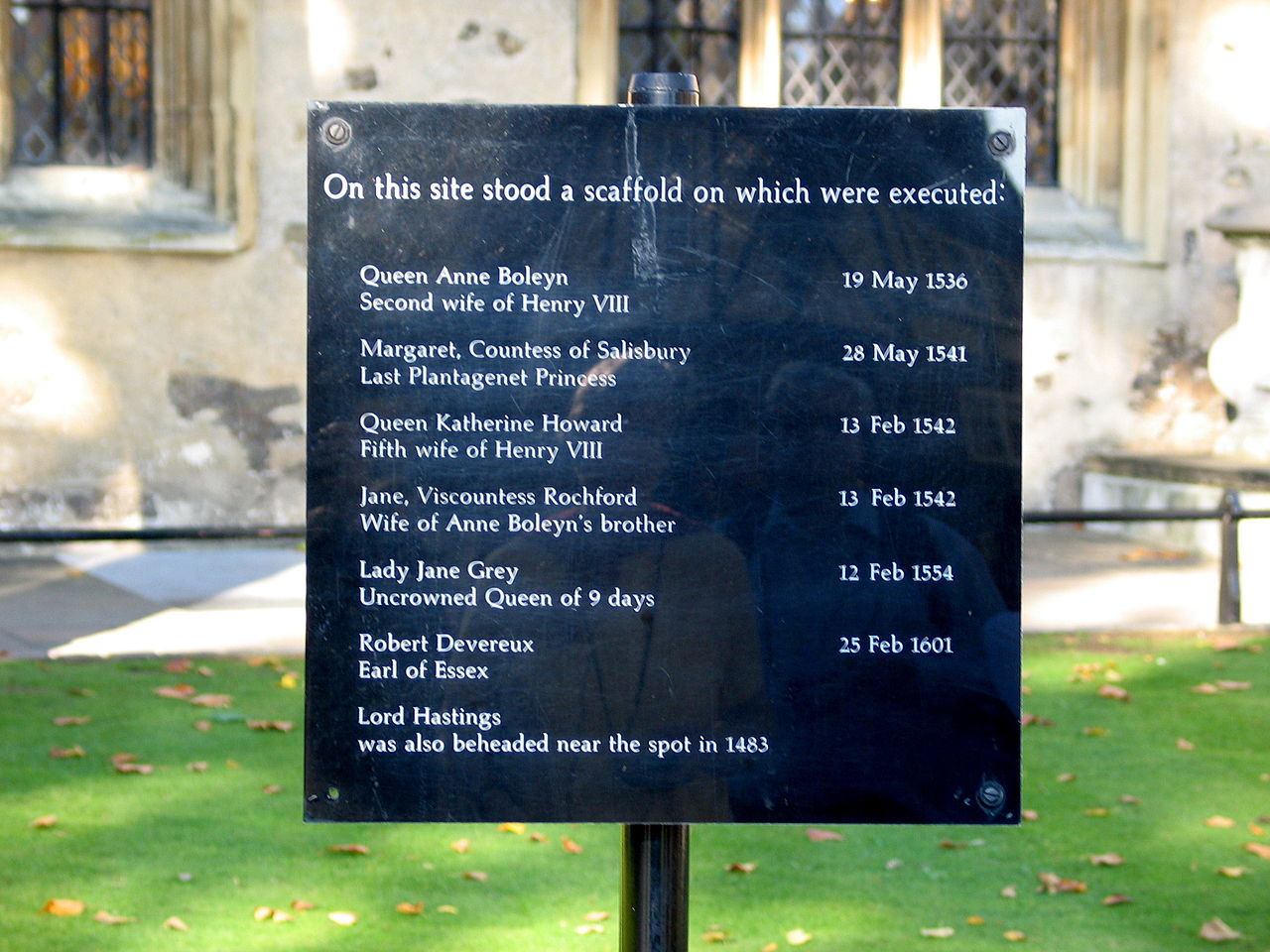I’ve read many books about King Henry VIII and his wives; Anne Boleyn being my favourite. This summer I came across the book Jane Boleyn: The Infamous Lady Rochford by Julia Fox and found it enlightening to know more about this women, who served five queens, survived the perilous situation with her sister-in-law Anne Boleyn and ultimately died with Queen Catherine Howard. Who was she?
Youth and marriage
Born as Jane Parker, her family were wealthy, well-connected, politically active and respected members of the English upper classes. She was sent to Court in her early teens, where she joined the household of King Henry VIII’s first wife, Queen Catherine of Aragon.

Before becoming a Boleyn, she was holding herself quite well at court, being one of the lead actresses/dancers in the prestigious “Château Vert” masquerade at Court in 1522. The seven performers were selected from the ladies of court in large part for their attractiveness. Two of the other performers included Jane’s future sisters-in-law, Anne and Mary Boleyn. In late 1524 or early 1525, she was married their brother George Boleyn. By 1529, she was known as Lady Rochford.

There are a lot of discussions about the happiness of the marriage. Many say it was quite unhappy, but according to Julia Fox, there is no real evidence to support this.
Downfall of the Boleyns
In May 1536, Henry VIII was desperate for a male heir and Anne failed to give him the son he wanted so much. Already being in love with wife #3 (Jane Seymour), a plot was most probably created to get rid of Anne by accusing her of aldutery with different men and incest with her brother George.

Many assumed that Jane had been a huge part of their downfall, but actually she was just mentioned once during the trial. Her bad reputation was mainly created when George Wyatt called her “wicked wife, accuser of her own husband, even to the seeking of his own blood” a couple of years later. However there was no evidence proving that. Unfortunately many historians reproduced these lies as facts.
Her biographer, Julia Fox believes that Jane actually enjoyed a warm and supportive relationship with Queen Anne. In her 2007 book, Fox writes:
Jane Rochford found herself dragged into a maelstrom of intrigue, innuendo and speculation. For when Cromwell sent for Jane, he already had much of what he needed, not only to bring down Anne and her circle, but to make possible the King’s marriage to Jane Seymour… Faced with such relentless, incessant questions, which she had no choice but to answer, Jane would have searched her memory for every tiny incident that occurred to her… Jane had not been quick to tell tales, but she had buckled under the pressure of relentless questioning… And it was her weakness under interrogation that gave her future detractors – happy to find a scapegoat to exonerate the King from the heinous charge of callously killing his innocent wife – the ammunition to maintain that it was her evidence that had fooled Henry and destroyed Anne and George…
Julia Fox
Jane Boleyn: The Infamous Lady Rochford – 2007
One scandal too many
After Anne Boleyn’s death, Jane lost everything. However she managed to build up a new living at court, serving the following queens: Jane Seymour, Anne of Cleves and Catherine Howard.
Lady Rochford kept her post as lady-in-waiting to the new Queen Catherine. Unfortunately, she got too involved in Queen Catherine’s indiscretions. Lady Rochford was detained for questioning, implicated in arranging meetings between the Queen and Thomas Culpeper.
During her imprisonment in the Tower, she suffered a full nervous breakdown and by the beginning of 1542 she was pronounced insane. This meant that she could not stand trial. Henry was so set on having her executed, that he implemented a law which allowed the execution of the insane for high treason. Jane was thus condemned to death by an Act of Attainder, and the execution date was set for 13 February 1542, the same day as Catherine Howard.

She was beheaded with a single blow of the axe and was buried in the Tower of London alongside Catherine Howard, close to the bodies of Anne Boleyn and George Boleyn.
Family tree
Do you want to see how she was related to Queen Elizabeth I and other famous Tudor characters? Have a look at the family tree I made:

Podcast/Video tip
I absolutely enjoy the video’s from Reading the Past. Please watch the one on Jane Boleyn:
Reading tip
As I mentioned before, the best biography to read of Jane Boleyn, is the one of Julia Fox: Jane Boleyn: The Infamous Lady Rochford

Jane Boleyn in media
When you watch movies or series about the Tudors, you will usually come across Jane Parker a couple of times:


